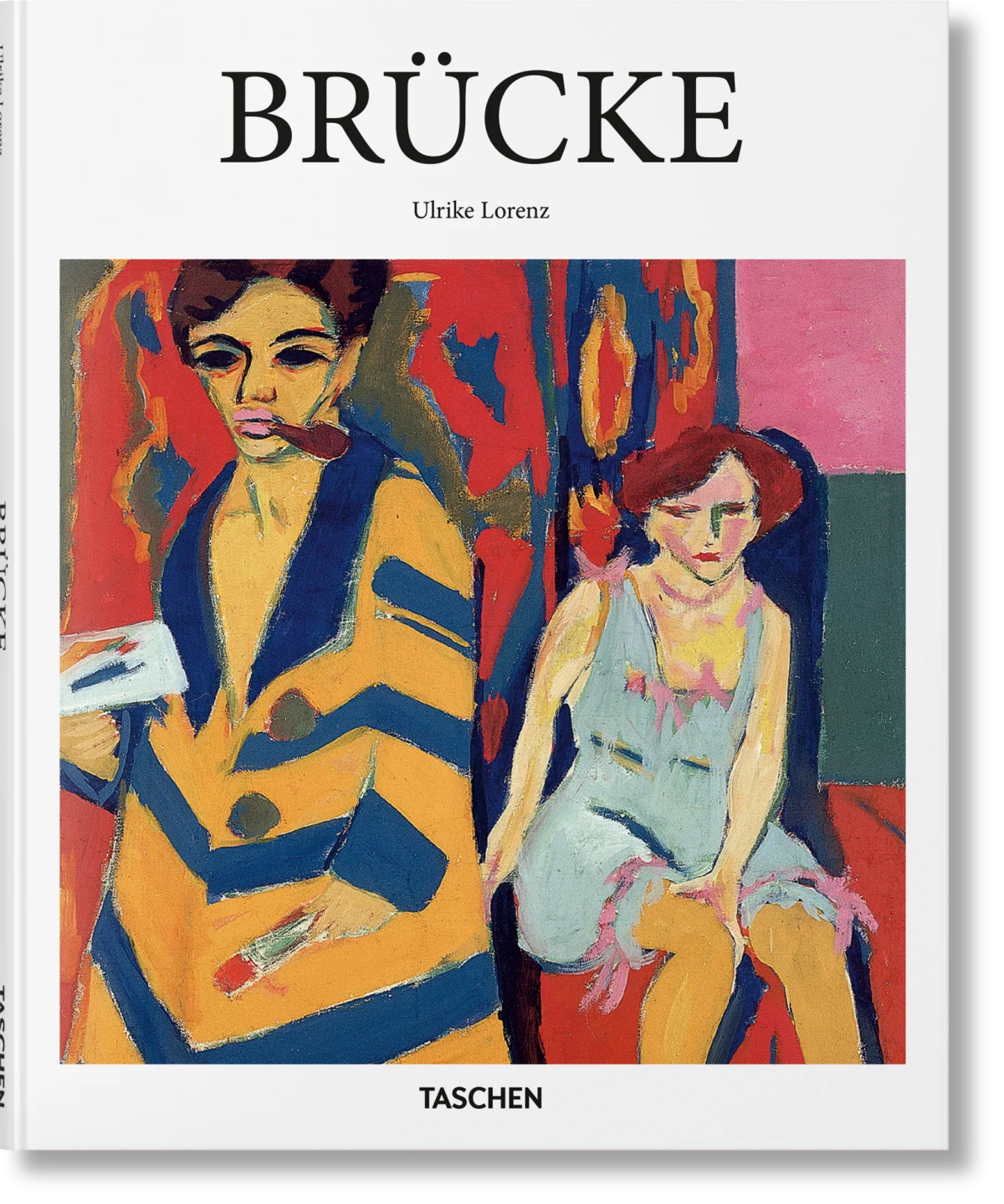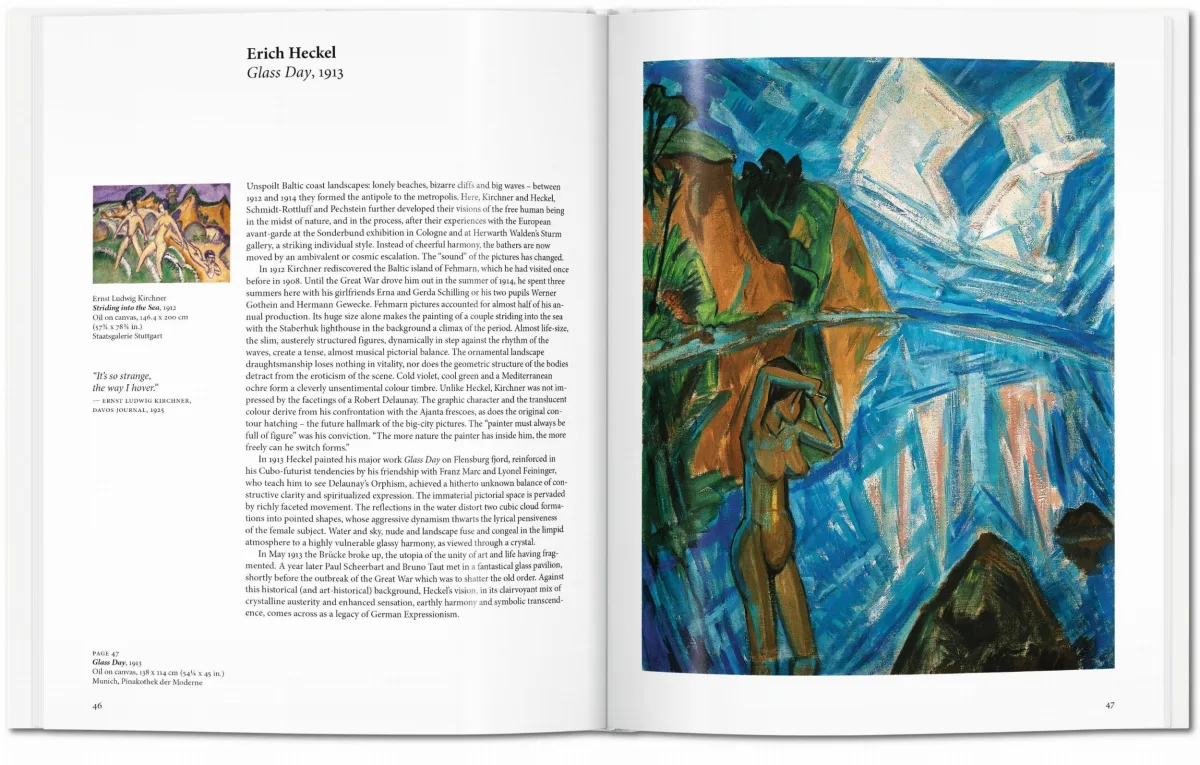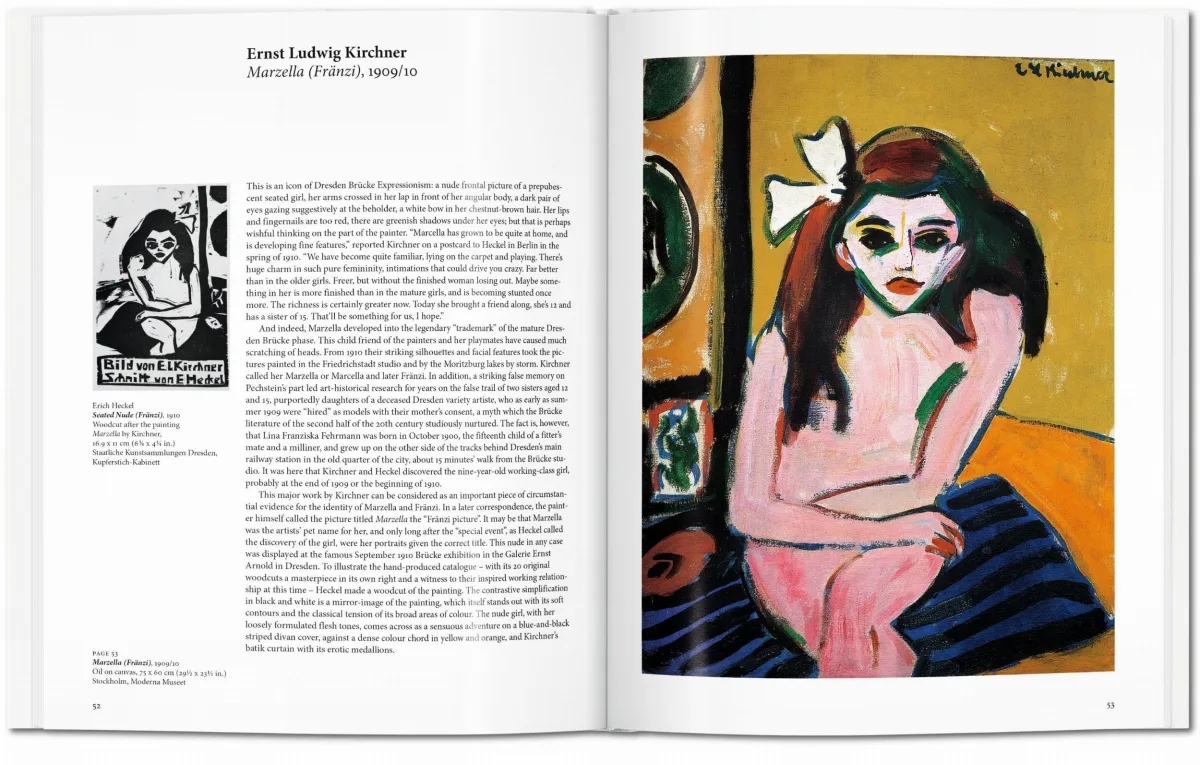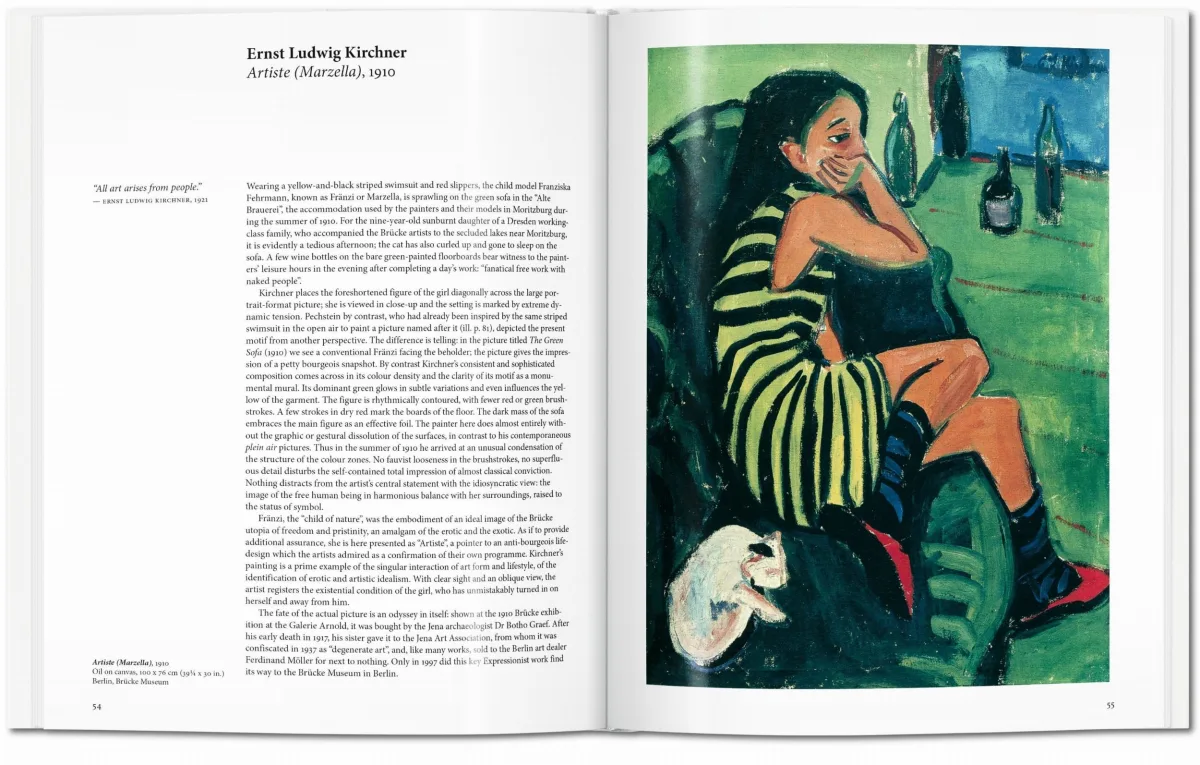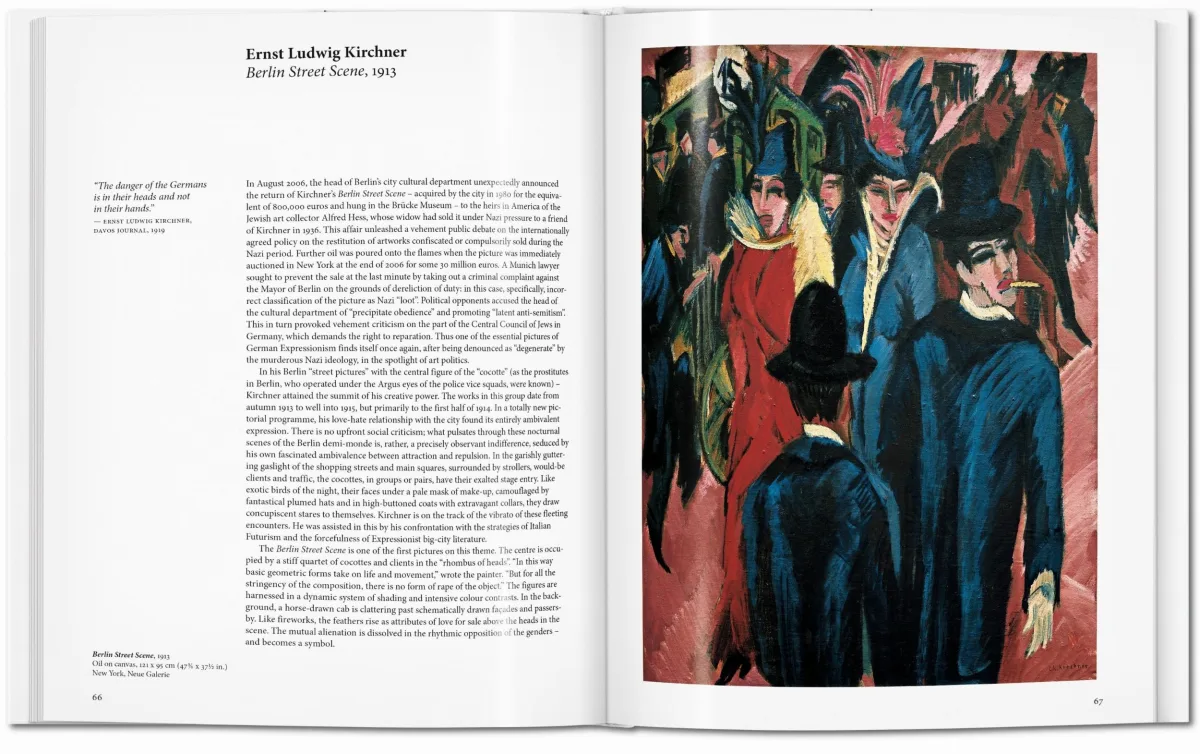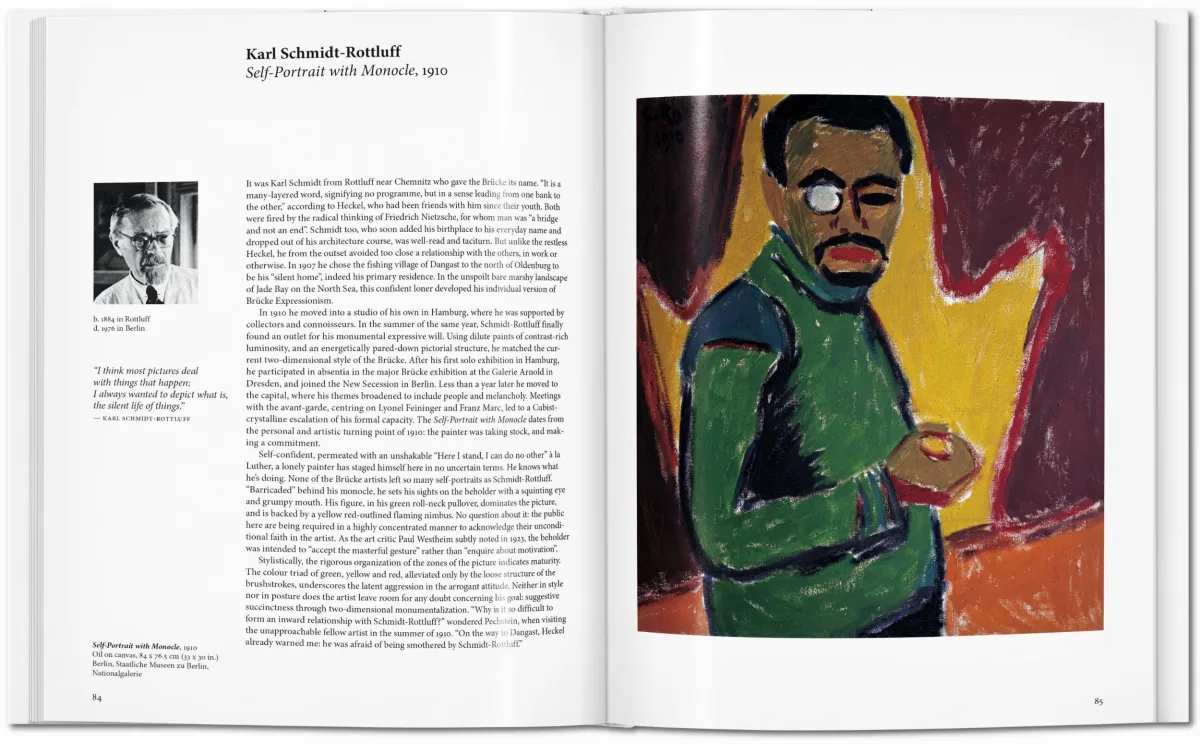1 / 7
Brücke
20Colori vivaci, piattezza xilografica, figure crude e scene sessuali spiazzanti: Questa presentazione compatta del gruppo di artisti del XX secolo Die Brücke svela un movimento innovativo che ha fatto a pezzi le immagini attraverso linee frammentate e ha rivoluzionato i canoni dell'epoca.
Copertina rigida, 8.3 x 10.2 in., 1.24 lb, 96 pagine

Brücke
20Bridging the Gap
The onset of Expressionism
In the German city of Dresden on June 7, 1905, the foundation of the Die Brücke artists’ group (1905–1913) is widely regarded as the birth of Expressionism. Led by Ernst Ludwig Kirchner, Fritz Bleyl, Erich Heckel, and Karl Schmidt-Rottluff, the group sought to reject the limits of academia and, as their name suggested, to bridge the path to an artistic future. Their manifesto, printed with woodblock, insisted on absolute freedom from convention in their work as well as their lives.
This new, liberated art incorporated portraits, landscapes, and city scenes, but substituted an objective rendering of reality with an expression of interior geography. In paintings, as well as their favored wood and linocut prints, the artists of Die Brücke would fill pictorial space with jagged lines, crude forms, and clashing colors, all to express their subjective experience of the world. Like the Fauves, the artists took stylistic lead from non-Western traditions of Oceanic and African arts, while also reviving the print and painting techniques of Albrecht Dürer and Lucas Cranach the Elder.
This richly illustrated book introduces this essential expressionist movement. We examine Die Brücke’s key works and protagonists; its varied, international inspirations; and its crucial influence on later 20th century art. Along the way, we find candid nudes, crowded street views, and blissful bathing idylls, each of them vivid with energy and intent on a new kind of art.
This new, liberated art incorporated portraits, landscapes, and city scenes, but substituted an objective rendering of reality with an expression of interior geography. In paintings, as well as their favored wood and linocut prints, the artists of Die Brücke would fill pictorial space with jagged lines, crude forms, and clashing colors, all to express their subjective experience of the world. Like the Fauves, the artists took stylistic lead from non-Western traditions of Oceanic and African arts, while also reviving the print and painting techniques of Albrecht Dürer and Lucas Cranach the Elder.
This richly illustrated book introduces this essential expressionist movement. We examine Die Brücke’s key works and protagonists; its varied, international inspirations; and its crucial influence on later 20th century art. Along the way, we find candid nudes, crowded street views, and blissful bathing idylls, each of them vivid with energy and intent on a new kind of art.
L'autore
Ulrike Lorenz is Director of the Kunsthalle Mannheim and former director of Art Forum East German Gallery in Regensburg. She studied art history and archeology at the University of Leipzig and received her doctorate from the Bauhaus-University in Weimar.
Brücke
Copertina rigida, 21 x 26 cm, 0.56 kg, 96 pagineScarica qui le immagini del prodotto
Nata nel 1985, la serie Basic Art è diventata la collezione di libri d’arte più venduta al mondo. Ogni libro della serie Basic Art di TASCHEN contiene:
una cronologia dettagliata riassuntiva della vita e delle opere dell’artista, inserito nel contesto storico e culturale in cui è vissuto
una biografia concisa
circa 100 illustrazioni con didascalie esplicative
5
Very cool
27 ottobre 2021
Another short very cool bookAs always - great piece of the Art Series
27 ottobre 2021
Very detailed intro, illustration of mist important pieces coupled with Bios of the Artists I love the Basic Art Series
